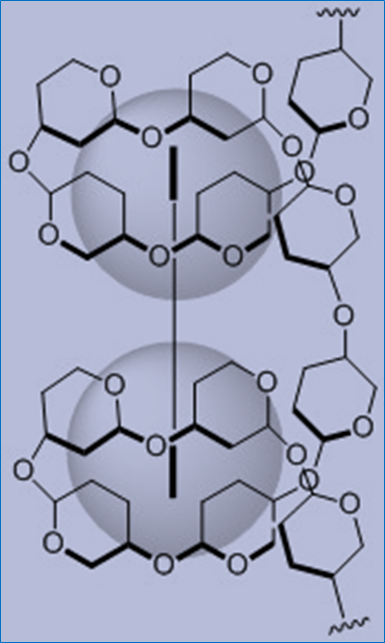Iodometry
An aqueous solution containing diiode I2 is orange-brown, whereas when it contains iodide ions, it is colorless.
Thiosulfate S2O32- is often used to titrate I2 but I- can also be dosed by the tetrathionate ion S4O62- .
Starch can be added to the solution to make it easier to observe the color change. When the diiode comes into contact with the starch, a dark blue colored I2 – starch complex is formed.
The diiodine is poorly soluble in aqueous solution so that it is most often the triiodide ion I3-. The reaction equations are as follows:
I2(aq) + 2 S2O32- (aq) = 2 I-(aq) + S4O62-(aq)
Disappearance of a brown or black color (in the presence of starch)
2I-(aq) + S4O62-(aq) = I2(aq) + 2 S2O32- (aq)
Appearance of a brown or black color (in the presence of starch)
An example of iodometric colorimetric titration is the Winkler method.





